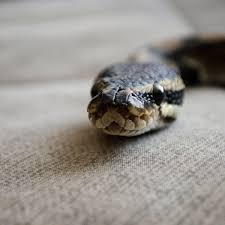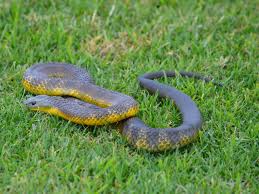Frequently searched questions on pest control
What is the difference between termites and ants?
Yes, for some who still associate termites with ants due to its name label white ants, both pest species have vast differences. In terms of outlooks, the termite has a thicker waist, straight antenna and uniformed wings. Besides their appearance, their food choice and habitat is different to those of ants. Termites feed on wood and moisture, live underground forming colonies and work 24/7. As such, to get rid of termites, termite treatment carried out is different on how you will get rid of ants.
How to get rid of ants?
They are tiny and generally harmless, yet they annoy many households because of their persistent presence. Particularly, they crawl along the kitchen top and along the wall, and despite how we try to remove the ant infestation, success seems low. This includes using insecticide spray, sticking traps or utilises repelling methods such as natural ingredients including chalk, vinegar and spices. Ant control is necessary to remove its nests and root source, and detect areas with high risks of ant activities for added measure. This includes monitoring and ongoing pest control services to keep condition under control.
What Does termite infestation look like?
Majority search on termites amongst many pests due to its ambiguity and complexity. Because they are not physically present or visibly seen, signs of termite infestation can be challenging to take notice. While some pests illustrate clear signs of infestation such as droppings and scratch marks, termite infestation signs are less straightforward.
Why do I have booklice in my home?
Given their name as a hint, most would think books cause booklice infestation. However, this is just a mythical statement and rather booklice is a result of high moisture and humidity. They feed on mold and mildew and perhaps the reason why we associate this unusual pest with books is their presence on books as they feed on mod among them. Ensure the home is well ventilated, humidity level is reduced and remove any poor condition of items that grow mold and mildew on them.
Does citronella repel mosquitoes effectively?
One of the most common go-to mosquito prevention remedies in response to the high dengue cases is the use of citronella or lemongrass. Mozzies dislike the scent and will repel them for a short while, however, mosquitoes used receptors to track and follow their hosts as they picked up the carbon dioxide as we exhaled. They also used their strong sense of navigation in detecting the body warmth and heat we exude and thus, getting rid of mosquitoes should not rely on the repel method. Instead, ensure adequate mosquito control that eliminates mosquito breeding and adult mosquitoes are in place.

Home & Garden Pest Management Guide
The Home and Garden Pest Management Guide provides information on identification and management of pests, diseases and weeds in the home and garden, with emphasis on pest prevention and Integrated Pest Management.
This publication:
Includes information on over 400 common pests and diseases of fruits, vegetables, ornamental plants, and lawns, and how to manage them;
Contains hundreds of photographs of plant pests and weeds to aid with identification;
Provides information on new invasive pests and weeds that may threaten agriculture, forestry and the environment;
Provides tips on composting, fertilizing, lawn care and safe use of pesticides.
Integrated Pest Management
Integrated Pest Management is a decision-making process for managing pests in an effective, economical and environmentally sound way. An Integrated Pest Management approach can be used for crops and livestock pest management, and in the home garden.
Techniques used in Integrated Pest Management programs range from preventative and cultural measures to the use of biological, physical, behavioral and chemical controls. One or several measures may be coordinated into a management program for a target pest, or for the entire pest complex of insects, mites, diseases and weeds affecting a particular crop.
The Six Elements of Integrated Pest Management
Planning and managing agricultural production systems to prevent insects, plant diseases and weeds from becoming pests
Identifying pests, their natural enemies and damage
Monitoring populations of pests and beneficial organisms, pest damage, and environmental conditions
Making control decisions based on potential damage, cost of control methods, value of production, impact on other pests, beneficial organisms and the environment
Using strategies that may include a combination of behavioural, biological, chemical, cultural and mechanical methods to reduce pest populations to acceptable levels
Evaluating the effects and efficacy of management decisions
Natural Pest Control Guide
Garden Pests A-Z
Ants, Aphids, Birds, Caterpillars, Cats, Deer, Dogs, Earwigs, Fleas, Gophers, Mealy bugs, Mice, Mildew, Mold & Fungus, Moles, Opossums, Scale, Slugs, Snails, Spider Mites, Thrips, Voles, Whitefly
Natural Pest Repellants
Garlic Fire Spray, Smothering Oily Mixture, Rhubarb Spray, Molasses Blend, Vinegar Blend, Scale Mixture, Fish Fertilizer
Even when using natural sprays, do as little harm as possible and don’t try to outgun nature.
You will have some advantage in managing garden pests if you are gardening organically as you will be encouraging natural biological control. Still it’s wise to be prepared for action should your plants come under attack.
Beneficial Garden insects and creatures: Here’s how toattract these good critters to help with natural garden pestcontrol
Regulatory Directive: Guidelines for the Registration of Microbial Pest Control Agents and Products
This directive outlines the requirements for the registration of microbial pest control agents and products proposed for pest management at this time. The data requirements are essentially harmonized with the United States Environmental Protection Agency. Microbial pest control agents are naturally occurring or genetically modified microorganisms, including bacteria, algae, fungi, protozoa, viruses, mycoplasmae or rickettsiae, and related organisms.
Several regulatory proposals, including PRO98-01, Guidelines for the Registration of Microbial Pest Control Agents and Products, dated January 30, 1998 and PRO93-05, Research Permit Guidelines for Microbial Pest Control Agents, dated November 25, 1993, invited comments on proposed registration requirements for microbial pest control agents. Approximately 65 detailed comments on PRO93-05 were received from interested parties in the biotechnology, agri-food and forestry sectors, and eight comments were received on PRO98-01 and incorporated as appropriate.
Foreword
This directive outlines the requirements for the registration of microbial pest control agents and products proposed for pest management at this time. Microbial pest control agents are naturally occurring or genetically modified microorganisms, including bacteria, algae, fungi, protozoa, viruses, mycoplasmae or rickettsiae, and related organisms.
This directive reflects progress in several important areas:
The data requirements are essentially harmonized with the United States (U.S.) Environmental Protection Agency (EPA). accepts all U.S. guidelines for conducting studies. Both countries require efficacy data to be generated. International activity involving the Organisation for Economic Co-operation and Development (OECD) Working Group on Pesticides has developed a document, Guidance for Registration Requirements for Microbial Pesticides, which will be published in 2001. The document proposes guidance for registration requirements for microbial products, and indicates where there are differences among countries.
The Guidelines will help enable products that have the potential to contribute to alternative pest management to be considered for registration because the data requirements are specifically developed for these types of products.
The Guidelines support effective and sustainable pest management and the introduction of new pest management technology, fundamental elements of the Pest Management Regulatory Agency’s (PMRA) overall program to reduce risk to humans and the environment.
Several regulatory proposals, including PRO98-01, Guidelines for the Registration of Microbial Pest Control Agents and Products, dated January 30, 1998 and PRO93-05, Research Permit Guidelines for Microbial Pest Control Agents, dated November 25, 1993, invited comments on proposed registration requirements for microbial pest control agents. Approximately 65 detailed comments on PRO93-05 were received from interested parties in the biotechnology, agri-food and forestry sectors, and eight comments were received on PRO98-01 and incorporated as appropriate.
Pricing Guide for Pest Control Business Owners
As the owner of a new pest control company, one of the things you may be struggling with figuring out is how much to charge for your services to remain competitive. If you charge too little, you won’t make enough profits, and you won’t be able to grow your company.
Additionally, some owners believe that up-charging customers and inflating prices is an effective strategy because it gives the appearance of legitimacy and quality. However, studies have found that this is not the case. If you price your services too high, you can end up driving customers away.
So, just how much should you charge for pest control jobs? In this article, we’ll cover all of the things that should go into your decision. By the end of the article, you’ll know exactly how to price pest control services so that you can remain competitive in the industry.
How Much Does Pest Control Cost?
Before setting your price, you should investigate the average price for pest control services in your area. How much does an exterminator cost these days anyway? The average pest control costs can vary depending on where you are. For instance, the price of pest control jobs rodent infestation
Not All Pest Control Pricing is the Same
The other thing to consider when determining how much to charge is that not all pest control pricing is the same. Numerous factors go into the price of a project. We’ve highlighted some of those factors below.


